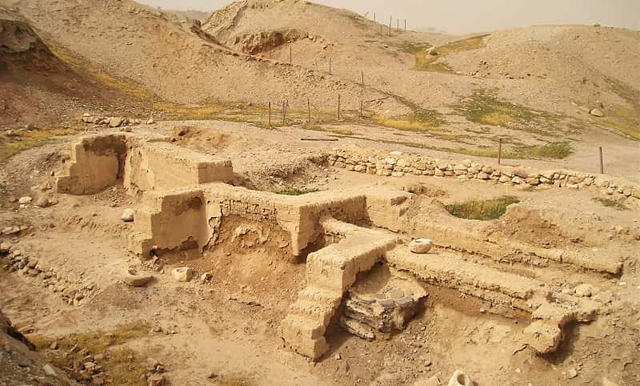You are here
Excavation in Khirbet Al Batrawy gives clues to ancient urban centre
By Saeb Rawashdeh - Dec 27,2017 - Last updated at Dec 27,2017

Khirbet Al Batrawy site, some 25km north of Amman (Photo coutesy of Sapienza University of Rome)
AMMAN — With the aim of excavating an early urban centre, the Italian Sapienza University of Rome has conducted a project in Khirbet Al Batrawy.
The site was established around 3000 BC, said Lorenzo Nigro, who is affiliated with Sapienza University of Rome and leads the expedition at Khirbet Al Batrawy, around 25km north of Amman.
“People leaving in rural villages along the banks of the Zarqa River [which actually formed a lake in the area of the modern town of Zarqa], chose a hilltop site as the seat of a communal temple and the palace of a ruling institution, which organised long-distance trade [up to Egypt as finds demonstrated] with donkeys caravans and a military force to control overland routes and the ford across the river, which was the easternmost tributary of the Jordan River, that is the first water course reached by travellers arriving from the east, Nigro elaborated.
The impressive four-lined fortification system of Batrawy, with towers, gates and even staircases, allowing the soldiers to climb up the wall quickly, is a major example of how urbanisation was connected to the necessity of gathering, storing and protecting agricultural products and other stuff which had become the material wealth of the city-state, he continued.
In the meantime, the palace with its symmetrical plan and incredible number of finds (pots, jars, pithoi, but also weapons and jewels) shows how the ruling class had already developed a symbolic language of power (bear skin and king's cup ) and exercised a strong control over the city, its land and the trade routes, the archaeologist noted.
“Moreover, the palace also promoted technological innovation as the finding of three potter's wheels inside it testifies to,” the scholar highlighted.
The connection with Egypt was on the copper routes that linked Wadi Faynan, Timnah in the Sinai and the Rea Sea, Nigro said.
“Pharaohs of the 4th to 6th dynasties exploited this route to get copper and other typical products [oil and wine] from the Jordan Valley and the nearby highlands,” he emphasised, adding that in the palace of Batrawy a schist palette, an amethyst bead and other finds as a lotus-like vessel, speak for a special connection with Egypt.
Regarding future plans, Sapienza expedition is continuing the excavation of the ancient city and will soon complete the uncovering of the Early Bronze III city-gate, a monumental passage at the northernmost spot of the site, with a huge tower aside, he said.
“Inside the gate, a major part of the city is preserved in an exceptional condition like in the area of the palace, and many unpredictable discoveries can be expected,” Nigro noted.
Related Articles
AMMAN — During the fourth millennium BC, a new culture appeared in the southern Levant, with a “pronounced” attitude towards adapting the so
AMMAN — During the Covid pandemic,most of archaeological research in Jordan was put on hold.
AMMAN — The archaeological team found a dagger in a necropolis north of Tell Sultan thanks to a villager who gave it to the Italian-Palestin

















